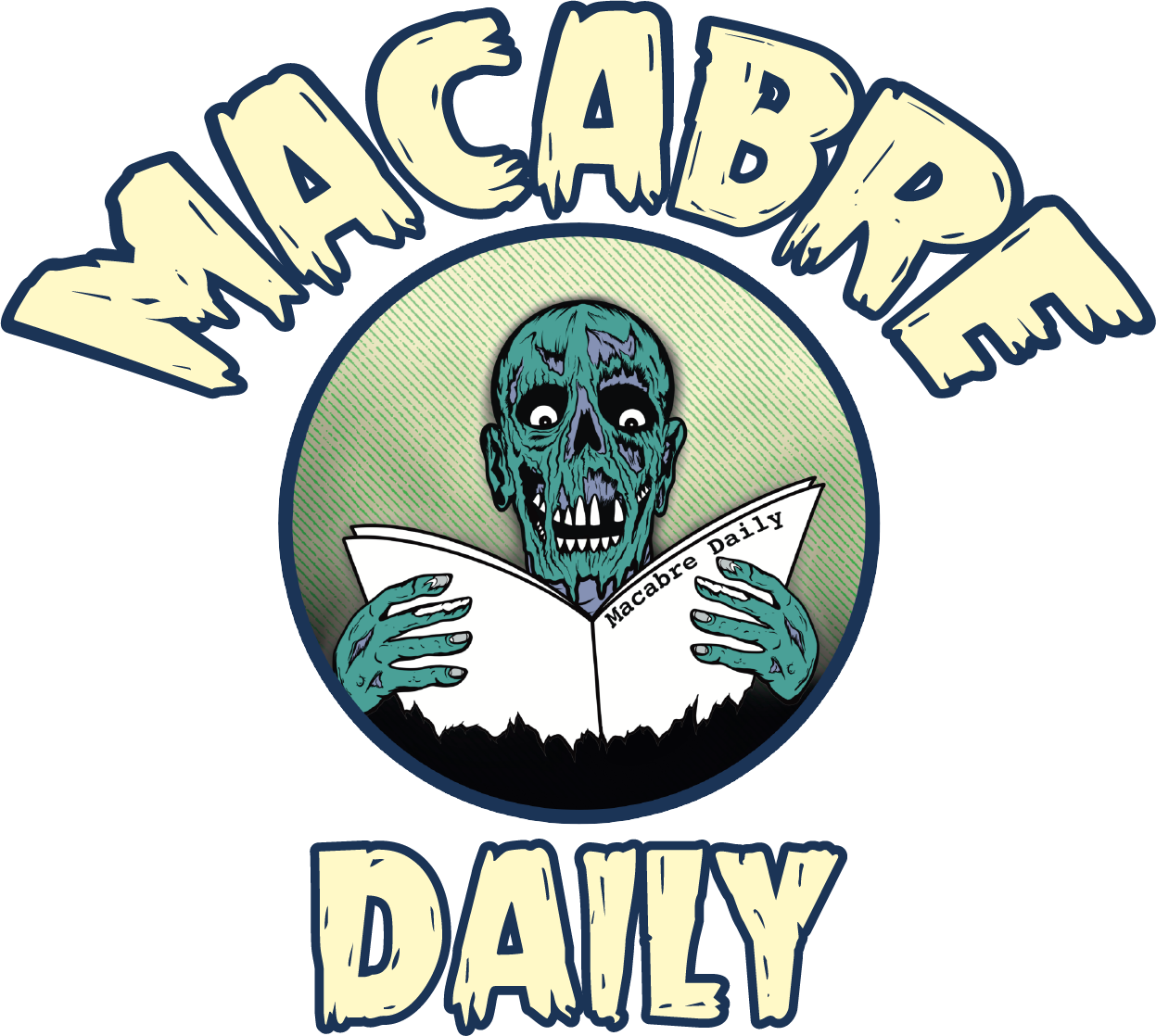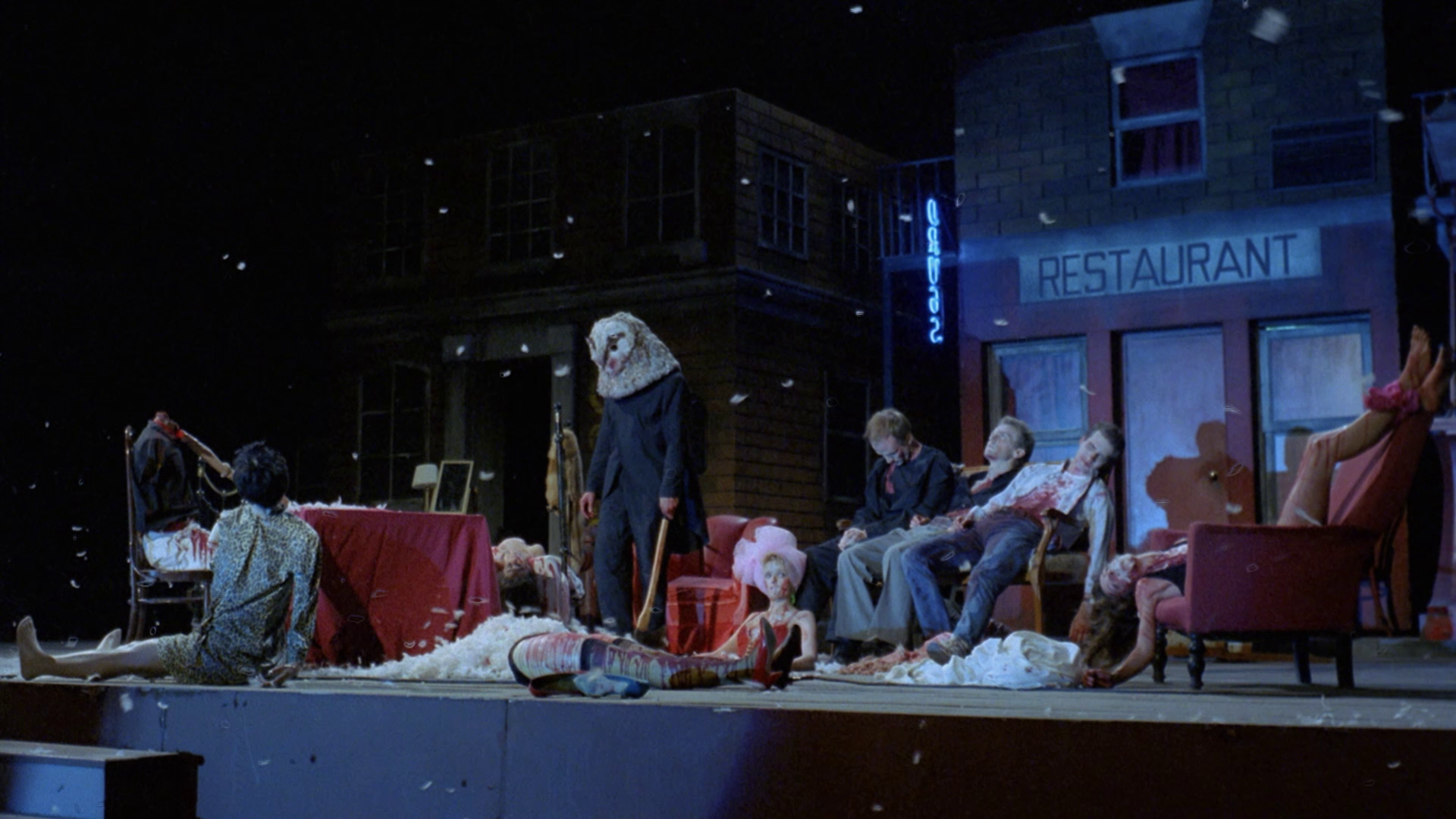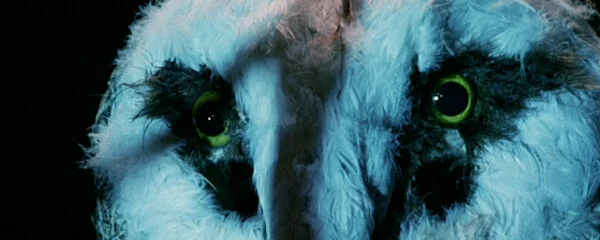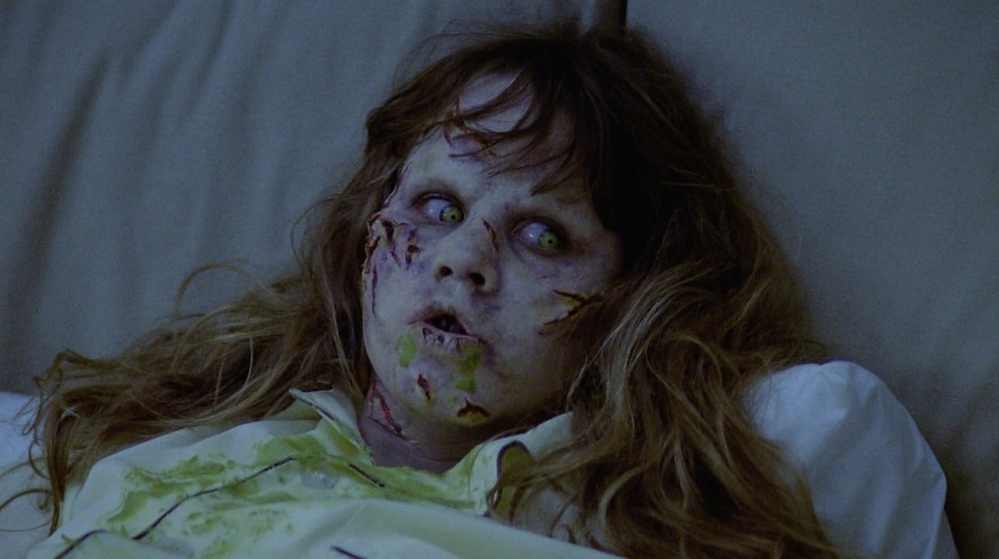RETRO REVIEW: STAGEFRIGHT(1987)
In MICHELE SOAVI’s directorial debut, STAGEFRIGHT, a serial killer in an owl mask terrorizes a late-night theater production rehearsal.
In Act 2, Scene 2 of Shakespeare’s HAMLET, the titular protagonist famously intones: “the play’s the thing,” after he’s arranged a production to be enacted before his uncle Claudius to procure some kind of guilty reaction out of his relative, thereby confirming to Hamlet that Claudius was the one that murdered his father, and allowing Hamlet to take his revenge with impunity. In MICHAEL SOAVI’s debut giallo/slasher hybrid, STAGEFRIGHT, a mental patient armed with a grudge and an owl mask decides to arrange his own theatrical vengeance, complete with over-the-top kills set to an 80’s synth score, and a curtain call tableau of dead bodies.
The scene is set for murder when a troupe of actors tries to escape a killer on the loose in STAGEFRIGHT.
PLOT:
STAGEFRIGHT (also known as DELIRIA, THE OWL MURDERS, AQUARIUS, STAGEFRIGHT: AQUARIUS, and BLOODY BIRD) follows a group of stage actors and crew rehearsing for a small town musical production. While they lock themselves in their theater to rehearse, they are unaware that a psychopathic actor, whom inspired their play has escaped nearby and, insulted by their portrayal of him in the play, commences a murder spree while locked inside the theater with them.
The body count rises as the night goes on in MICHELE SOAVI’s directorial debut, STAGEFRIGHT.
KILLS:
Our film kicks off with a troupe of actors rehearsing in a theater late at night for a rather lavish musical (?). I put that question mark in parenthesis because there is no singing as far as I can tell, but there is plenty of dancing, so maybe it should be called a “dancsical.” We meet director Peter (DAVID BRANDON), along with cast and crew members Alicia (BARBARA CUPISTI), Mark (MARTIN PHILIPS), Sybil (JO ANN SMITH), Betty (ULRIKE SCHWERK), Corrine (LOREDANA PARRELLA), Laurel (MARY SELLERS), Danny (ROBERT GLIGOROV), Brett (GIOVANNI LOMBARDO RADICE), and the production’s backer, inexplicably named Ferrari (though his face looks more along the lines of a busted Edsel). In any case, this “dancsical” is about a fictional mass murderer known as the Night Owl. When lead actress Alicia sprains her ankle, her and crew member Betty sneak out of the rehearsal for medical assistance at the nearest open hospital, which conveniently manages to also be a mental hospital. There, Alicia passes by the room of serial killer and former actor, Irving Wallace (CLAIN PARKER) who’s under observation until his case is reviewed after he allegedly murdered 16 people. As Betty and Alicia leave the hospital, Wallace escapes, hitching a ride in the back of the ladies car, unbeknownst to them.
Once they return back to the theater, the kills almost instantly kick off when Betty returns to her car, realizing she left her lights on, getting a pickaxe in the mouth from Wallace. In one of the more disturbing kills, Alicia’s replacement is rehearsing on the stage, with the director Peter talking her through the scene. Unknowingly, Wallace appears in the owl costume on stage, with Peter and everyone else thinking that it’s Brett, the actor who’s playing him. As Wallace starts strangling the actress in his disguise, Peter eggs him on to go even further with it, not realizing that he’s actually killing her. When Wallace brings out a knife and stabs her, which was not part of the scene, the entire cast watch in horror as he plays out his re-write, a bright spotlight on the both of them, highlighting their theater of the macabre.
In one of the best kills of the film, a member of the cast is pulled down through some faulty wood in the attic of the theater by the killer, and as her fellow cast members try to free her, pulling as hard as they can, she is literally ripped in half with a sound effect akin to if the Foley artist for this film crunched down on a banana with the skin still on it. It’s ridiculous but bloody and so great.
The killer takes his final bow amidst a macabre tableau in STAGEFRIGHT.
VISUALS/SFX:
The visuals in this film are surprisingly stunning for what seems to be a pretty straightforward slasher film. But, this is also MICHELE SOAVI we are talking about, who not only apprenticed under the hand of giallo master DARIO ARGENTO, but was also the second assistant director on the fantastically bloody TENEBRAE (1982). Argento once commented on directing arguably one of his best works, DEEP RED (1972), that you can tell a lot about what mindset the director is in when you watch one of their films: "As I was filming it [DEEP RED], I knew exactly what I wanted. I was very relaxed, not stressed at all….You just need to watch a movie to know how the director was feeling at the moment he was making it." Though STAGEFRIGHT was Soavi’s directorial debut, you can feel the assuredness in his choices from scene to scene. Though the dialogue leaves much to be desired, and there are a few plot holes left unanswered, STAGEFRIGHT is nothing if not deliberate when it comes to the atmosphere it wants to create.
Case in point. When Laurel notices Wallace outside trying to open the door and the group barricades the door, Wallace then breaks the window to grab Mark before killing him with a power drill through the door. In a perfect giallo-style moment, as the group fights to keep the killer out of the dressing room, a bottle of fake blood gets knocked over and spilled on the floor. Just then, a power drill comes barreling through the door and through poor Mark’s stomach in the process, the camera panning down to see Mark’s real blood now mixing into the puddle of the prop blood, theater and real life colliding in ghoulish fashion.
Perhaps the films’ most stunning visual comes at the end, when our killer brings out his cache of dead bodies, artfully arranging them around the stage in a macabre spectacle, as a fan on the stage blows white feathers into the air. I suppose it makes sense that Wallace’s character is a former actor, because he is nothing if not a showman, reveling in his bloody accomplishment with all the grandeur of an actor playing Hamlet center stage at the ROYAL SHAKESPEARE COMPANY. This is a killer that positively sinks his teeth into the theatrics of killing - every blood spray and severed limb his own standing ovation and it’s a moment that is, at both turns, gorgeous and disturbing to behold.
Even the visual of the killer's mask creates an unmistakable impact on the audience. Any slasher killer could don a hockey mask or a ghost face mask, but there is something so strangely unsettling, and yet somehow, undeniably Avant Garde and interesting about a serial killer wearing a giant, fluffy owl head. It’s not something seen often in slasher fare, and though it could have easily come off as comical, it absolutely works, with the mask becoming more bloody and distressed as the kills pile up, always with those creepy amber eyes staring out at us.
The cast of a local musical production must band together to escape a killer on the loose in STAGEFRIGHT.
PERFORMANCES:
Most of the performances in the film are akin to your typical slasher fare, and are really only there to service the plot along and provide a body count along the way. While the acting is not great, it’s not terrible, and everyone does admirably commit to their individual roles, no matter how big or small.
BARBARA CUPISTI as our obligatory “final girl” Alicia, is in some ways a typical giallo female protagonist: doe-eyed, dark-haired, and of course, initially gaslit by the people around her under her assertion that there is a killer on the loose. But, she of course, proves to be smarter than we initially think, eventually procuring the key from literally right under the killer's nose and taking him out in the process, or so we think. As Alicia sits in the final moments of the film in the back of the police car, watching the white-sheeted figures of her friends and colleagues get taken out of the theater (some in bagged up pieces), her expression is one blank-faced shock at realizing the scope of carnage that just took place.
But it’s really DAVID BRANDON as the acerbic and greedy director Peter, that gets to really sink his teeth into this film. After Alicia injures herself during rehearsal and leaves to get treatment at that mental hospital, she’s unceremoniously fired by him. He yells at his actors, locks them into the theater, and decides to capitalize on the murder of a crew member by rewriting his play to specifically change the name of the killer to Irving Wallace, thereby incurring Wallace’s wrath. He’s basically the stereotype of every musical theater director in the 80’s and it’s somehow fitting that his death is one of the more gruesome ones in the film.
In STAGEFRIGHT, an escaped killer dons an owl mask to terrorize a group of actors.
OVERALL IMPRESSIONS:
STAGEFRIGHT asks the question: what if you took the musical A CHORUS LINE, crossed it with a DARIO ARGENTO giallo, and added in a healthy dose of FRIDAY THE 13TH? If that’s a premise that sounds both bonkers and amazing to you, then STAGEFRIGHT is for you. Not content to simply make a slice-and-dice slasher, Soavi manages to create a horror film with some real stakes, the center of it being the key to the theater doors. Throughout the movie, while people are getting popped off, we are also trying to follow this key in a kind of perverse shell game, seeing who, if any, will be alive at the end of this to find it and get out.
There is some debate as to whether STAGEFRIGHT falls under the giallo or slasher horror sub-genre. Unlike most giallo films, there is no question about who the killer is in this film, and in that respect, STAGEFRIGHT heads right into slasher territory along the ranks of FRIDAY THE 13TH and HALLOWEEN. However, that doesn’t mean that STAGEFRIGHT isn’t considered giallo for a host of reasons. The elaborate and bloody deaths, the camera angles and overtly blue lighting, and the jarring, synth-like score all create an atmosphere worthy of the heyday of the giallo era (even though by the film’s release in 1987, the giallo craze was all but gone from popularity). Ultimately, it really doesn’t matter what category STAGEFRIGHT falls into. If you are a slasher fanatic looking to start getting into the giallo genre and vice versa, STAGEFRIGHT is nothing if not a fantastic entry point into the worlds of both.
The play’s the scream in MICHELE SOAVI’s slasher, STAGEFRIGHT.
THE GORY DETAILS:
The scene where Brett bows in front of the mirror to reveal Wallace standing directly behind him is done in homage to DARIO ARGENTO’s film TENEBRAE (1982), which MICHELE SOAVI was an assistant director on.
During a screening at the Fantasia Film Festival, fans threw white feathers from the theater balcony which showered down on the audience in homage to the haunting finale of the film.
The loud classical music that Wallace blasts over the theater system is from SERGEI M. EISENSTEIN’s film BATTLESHIP POTEMKIN (1925).
Director MICHELE SOAVI cameos as the young cop staked out in the patrol car outside the theater.
MY RATING: 8.5/10
WHERE TO WATCH:
Tubi, Vudu, Amazon Prime, Sling TV, YouTube, and Apple TV.


















